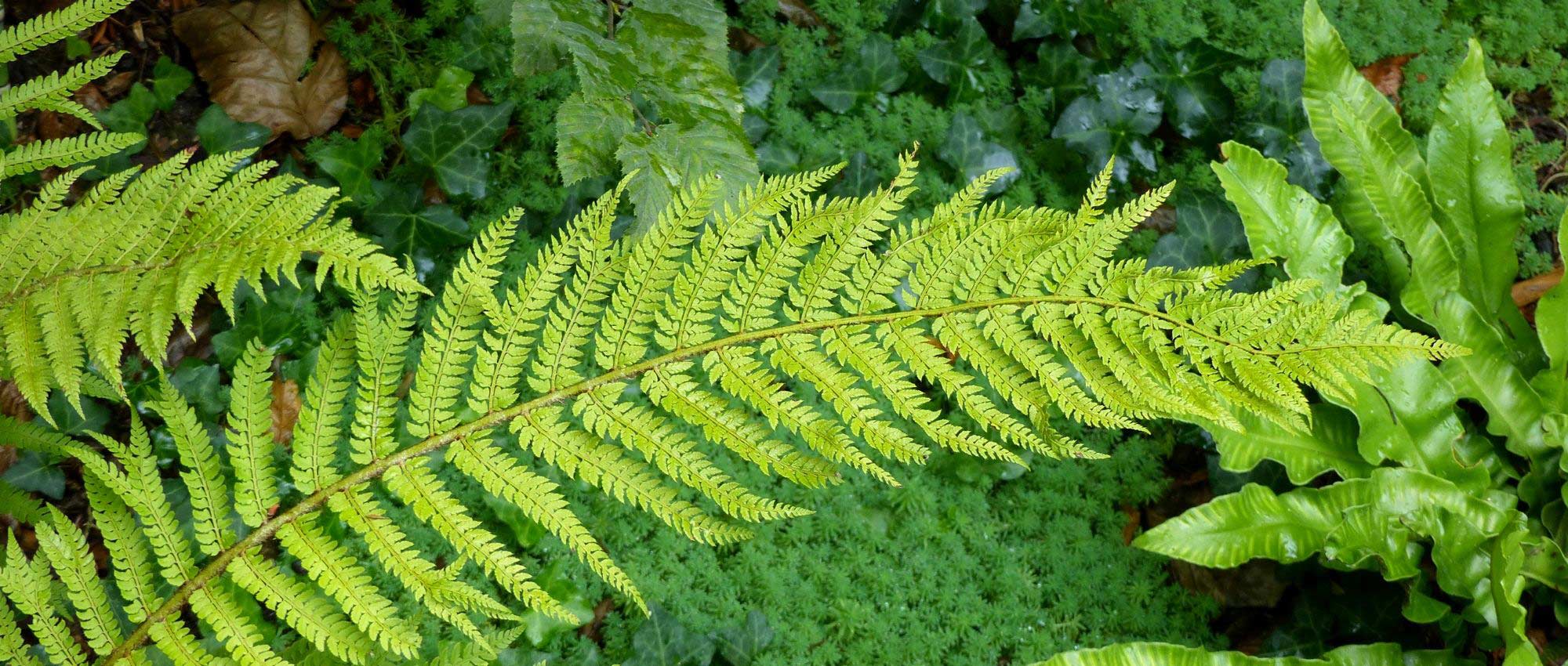
Polystichum: planting, cultivation and care
Contents
Polystichum in a nutshell
- Polystichum are ferns with beautiful, dark green, glossy fronds, finely divided!
- Evergreen, they therefore remain decorative even in mid-winter
- Easy to grow and require little maintenance
- Grow them in shade or partial shade, in soil rich in humus, moist and well-drained
- Perfect in a woodland garden with a very natural feel, or in a contemporary garden, chic and graphic!
A word from our Expert
Polystichum, also known as shield ferns, are evergreen ferns forming an open clump from which superb fronds, delicately divided, arise. They bring a lush look to the garden and create an ideal backdrop to showcase colourful flowering! There are over 270 species of Polystichum, as well as horticultural varieties. In the garden, the Polystichum setiferum is one of the most common: it produces handsome dark-green fronds, reaching up to 1.20 m in height. The Polystichum acrostichoides is also very decorative. Much smaller, it offers superb foliage, cut into entire elongated segments with a glossy sheen.
Polystichum are completely hardy, tolerating between -15 and -20 °C depending on the variety. They are fairly easy to grow, and thrive in shade or partial shade, in a cool, humus-bearing but well-draining soil, as they dislike stagnant moisture in winter. In the garden, you can plant them in woodland understorey, or in a rockery, but also grow them in pots or tubs to place on your terrace! Once established, Polystichum require very little attention.
Description and botany
Botanical data
- Latin name Polystichum sp.
- Family Dryopteridaceae
- Common name Aspidie, Polystic
- Flowering none
- Height between 40 cm and 1.20 m
- Sun exposure shade or partial shade
- Soil type fresh, humus-bearing, free-draining
- Hardiness between –15 and –20 °C
Polystichum are ferns that bear beautiful evergreen fronds, dark green in colour, often twice divided. They are perennial and include around 276 species, as well as hybrids. They have a very wide worldwide distribution (Asia, America, Africa, Europe…). Greatest diversity is in Asia, notably China, although many species also come from North America. They are terrestrial or saxicolous plants, so grow on soil or on rocks. In the wild, they are generally found in understorey, on fertile, fresh soils, acidic or neutral, sometimes in scree, rock outcrops, or by stream banks. They are also ferns valued in gardens for their ornamental interest. One of the most commonly planted for this purpose is Polystichum setiferum. Polystichum tsus-simense is sometimes grown as an indoor plant.
Polystichum belongs to family Dryopteridaceae, which includes over 1,800 species. This is the family of Dryopteris, another fern sometimes cultivated for its ornamental value, and occurring wild in France.
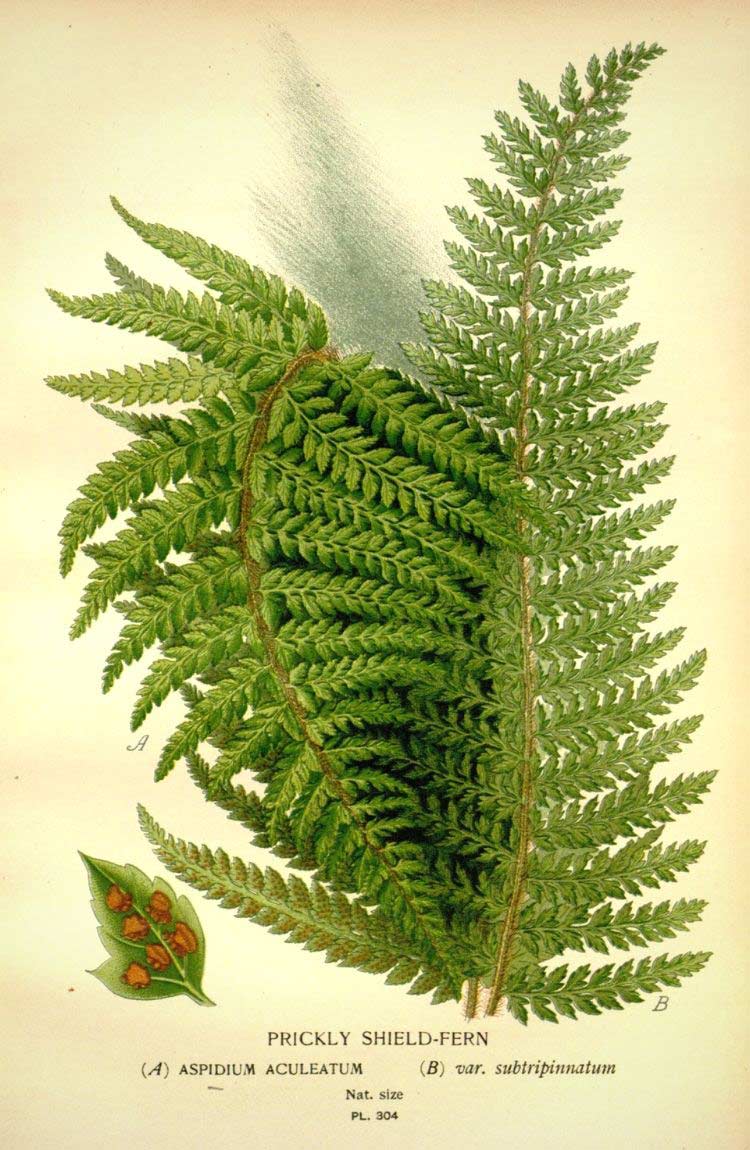
Polystichum aculeatum: Botanical illustration
Name Polystichum derives from Greek polys: many, and stikhos: row, alluding to rows of sori beneath the fronds. Specific epithet P. setiferum means “bearing bristles” (seta: bristle, fero: to bear), referring to scales present on petiole and rachis. In French, they are commonly called Aspidie or Polystic.
Polystichum form a crown of spreading fronds, which develop from an erect or slightly running rootstock. They grow between 40 cm and 1.20 m tall. Largest are Polystichum setiferum and Polystichum munitum, while smallest are Polystichum acrostichoides, P. rigens and P. tsus-simense, which only reach about 40–50 cm tall.
Polystichum does not produce flowers or seeds, but reproduces by releasing spores. Indeed, on undersides of leaves, ferns produce tiny spores contained in “sacs” called sporangia, which are themselves gathered into sori. When they reach ripeness, sporangia open to release spores, which resemble dust and are carried away by wind.
In Polystichum, sori are round and covered by a small membrane called an indusium, of round shape (this helps distinguish Polystichum from other ferns, such as Dryopteris, which have kidney-shaped indusia).
To reproduce, Polystichum need water. When spores fall to soil, they germinate and give rise to tiny organisms (prothalli), which produce male and female gametes: these can come into contact and fertilise each other thanks to water. A new small fern then develops directly from a prothallus.
Although this operation is more technical than sowing seeds, it is possible to sow Polystichum spores to obtain new ferns!

On undersides of fronds, ferns produce spores grouped into clusters called sori. Here, Polystichum × arendsii (photo Erwin Gruber) and Polystichum_acrostichoides (photo Krzysztof Ziarnek)
When they first appear, fronds are rolled into croziers, forming a neat spiral, covered with brown scales. In Polystichum, these croziers have the particularity of being curved backwards. They then unfurl to reveal superb fronds, delicate and finely cut. They are fairly dark, deep green in colour (although young fronds generally take lighter tones, sometimes yellow-green), and are usually shiny, glossy. Moreover, they are thick, leathery, sometimes with a slightly rough texture. Fronds are borne on a petiole that continues into a central axis, called rachis, around which the pinnae unfold. Petiole and rachis bear scales, generally brown. Fronds are generally twice divided: they are described as bipinnate. They divide into pinnae, which themselves divide into pinnules. These are pointed and asymmetrical in shape, generally auriculate (with an appendix). This makes it easy to distinguish Polystichum from other ferns, such as Dryopteris, whose segments are rather symmetrical.
Some species, such as Polystichum acrostichoides and Polystichum munitum, have much less divided fronds, cut only once. Pinnae are entire, lobed, arranged on each side of the rachis (central axis continuing the petiole). They resemble fronds of Polypodiums.
In Polystichum setiferum ‘Plumosum Densum’, fronds have a feathery aspect, very soft, and at the same time fairly dense and compact. This variety offers a very interesting texture effect in the garden!
Polystichum setiferum ‘Proliferum’ has the particularity of bearing bulblets: these are like baby ferns that grow along the central vein (rachis) of the fronds. On contact with soil, they can root and give new ferns.
Polystichum fronds have the advantage of being evergreen: they remain in place even in mid-winter! This fern therefore enlivens the garden throughout the year.

Young croziers of a Polystichum setiferum ‘Pulcherrimum Bevis’ (photo Dominicus Johannes Bergsma), and fronds of Polystichum tsus-simense (photo David J. Stang), Polystichum setiferum (photo Christian Guthier), and Polystichum munitum (photo Jami Dwyer)
Read also
Ferns: growing and plantingMain varieties of Polystichum
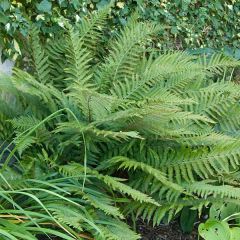
Polystichum polyblepharum - Japanese Lace Fern
- Height at maturity 60 cm
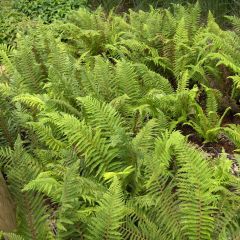
Polystichum setiferum - Soft Shield Fern
- Height at maturity 60 cm
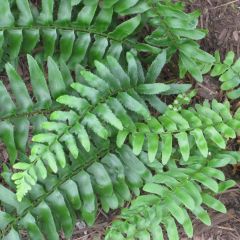
Polystichum acrostichoides - Christmas Fern
- Height at maturity 40 cm
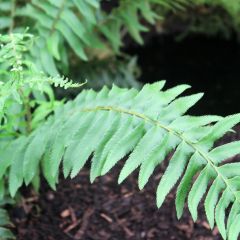
Polystichum munitum - Giant Holly Fern
- Height at maturity 1,10 m
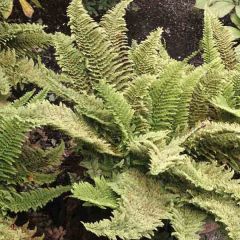
Polystichum setiferum Plumosum Densum - Soft Shield Fern
- Height at maturity 50 cm
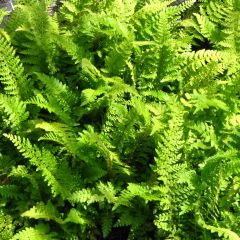
Polystichum setiferum Proliferum - Soft Shield Fern
- Height at maturity 60 cm
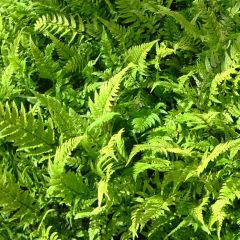
Polystichum tsus-simense - Korean Rock Fern
- Height at maturity 40 cm
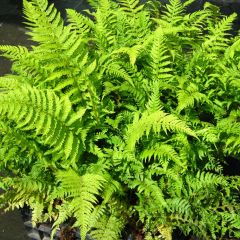
Polystichum setiferum Dahlem - Soft Shield Fern
- Height at maturity 80 cm
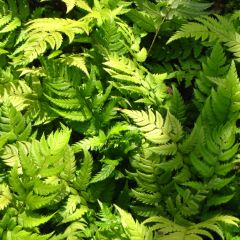
Polystichum rigens - Rigid Holly Fern
- Height at maturity 40 cm
Discover other Polystichum
View all →Available in 2 sizes
Available in 1 sizes
Available in 2 sizes
Available in 1 sizes
Available in 1 sizes
Available in 2 sizes
Available in 1 sizes
Available in 1 sizes
Available in 1 sizes
Available in 1 sizes
Planting
Where to plant?
As Polystichum grows naturally in forest, in the garden it will thrive in shade or partial shade. It can even tolerate quite dense shade. Feel free to plant it in an understorey garden: its spreading fronds with a natural habit will make a very attractive display alongside other perennials, creating a lush forest-like atmosphere. Polystichum generally prefers rather damp conditions, except in winter.
Polystichum will be happy in cool, light soil rich in humus. Before planting and during cultivation, we recommend adding well-rotted compost to enrich soil and improve its structure. However, Polystichum dislikes excess winter moisture, so it is preferable to plant it in well-drained soil. It also prefers neutral to slightly acidic soils. Finally, you can certainly grow Polystichum in a shady rockery.
However, some species can adapt to different growing conditions, since Polystichum acrostichoides appears to tolerate dry soils, and Polystichum munitum tolerates sun.
When to plant?
We recommend planting Polystichum in spring (around April) or in autumn (September to November), when temperatures are mild: avoid planting during frost or periods of extreme heat.
How to plant?
Feel free to plant Polystichum in groups rather than singly to achieve an attractive massing effect! You can also pair it with other ferns to create a cool, lush atmosphere.
For planting in the ground:
- Place the rootball in a basin of water.
- Choose a suitable spot, then dig a planting hole about twice the size of the rootball.
- Place some well-rotted compost at the bottom, mixing it with garden soil.
- Place your fern in the planting hole.
- Fill the planting hole, surrounding the fern with a mixture of soil and well-rotted compost.
- Water generously.
- We recommend applying a mulch around the clump to help keep soil cool for longer. You can use, for example, ramial chipped wood, pine bark or dried fronds.
For planting in a pot:
- Choose a large pot or container. It should have drainage holes in the bottom to prevent water from stagnating and causing root rot.
- Add a drainage layer made of clay pebbles or gravel.
- Add potting compost to the pot, optionally mixed with heather soil.
- Plant the Polystichum.
- Replace potting mix around it, and press down lightly.
- Water thoroughly.
- You can also add a surface mulch for appearance and to help keep soil cool.
Place the pot in a shaded spot and continue to water regularly.
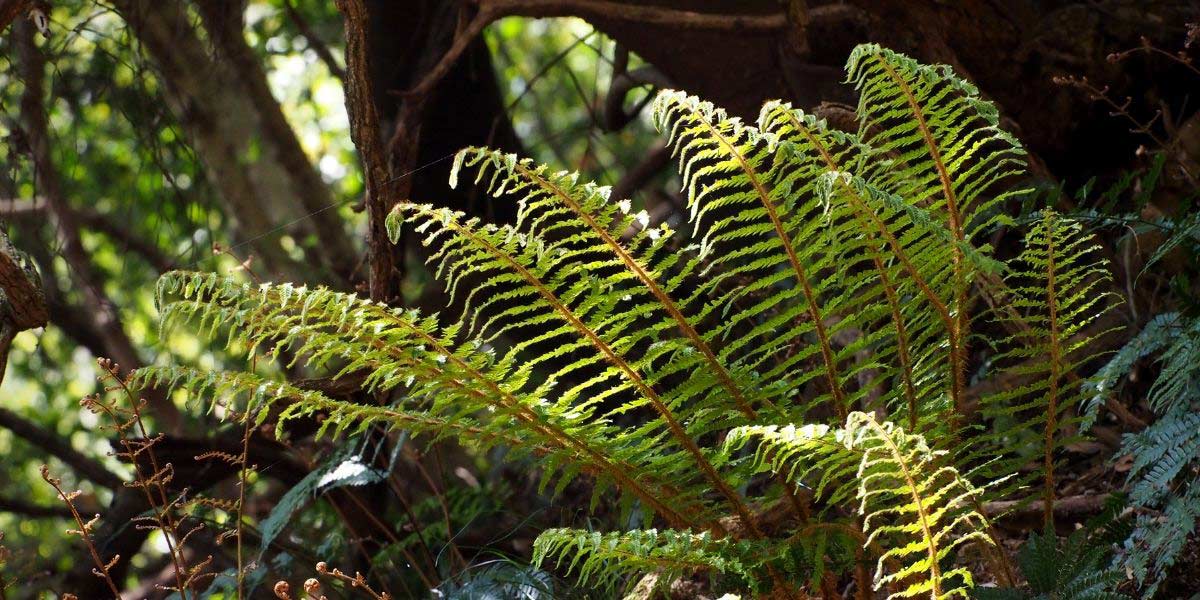
Polystichum polyblepharum (photo harum.koh)
Read also
Ferns: how to choose them?Care
Polystichum, like most ferns, requires very little maintenance. However, it will appreciate being watered during prolonged dry spells. If you grow it in a pot, remember to water regularly throughout the year. Also consider applying a layer of organic mulch around the clump, whether Polystichum is planted in ground or in a pot. This will help keep the growing medium cooler for longer, while enriching it and limiting growth of weeds. We also recommend removing dry or damaged fronds at end of winter, removing dry or damaged fronds.
If you grow it in a pot, remember to repot from time to time. Each time, choose a pot slightly larger than the previous one. Or, if Polystichum is already in a large pot, simply carry out a surface dressing by removing a shallow layer of growing medium a few centimetres deep and replacing with fresh potting compost.
Polystichum can be attacked by a fungal disease, Taphrina wettsteiniana. This fungus forms brown, rounded, thick galls on fronds, measuring up to 8 mm long. It is favoured by winter moisture, which is why we recommend growing Polystichum in a well-draining growing medium or protecting it from excess moisture in winter.
Multiplication
Sowing spores
Although Polystichum does not produce seeds, sowing spores is possible. This is a delicate operation, but achievable if suitable conditions are met, notably a sterile, moist substrate and a confined environment.
- Collect Polystichum spores.
- Use a transparent container, plastic or glass.
- Fill with potting compost and moisten it.
- Place container in microwave for about 10 minutes to sterilise it.
- Wait for substrate to cool, then sow Polystichum spores. Try to distribute them evenly over surface of substrate, but do not cover them!
- Close container with a clean, sterilised transparent lid.
- Place sowing in a bright spot out of direct sunlight, ideally at 15–18 °C.
- When young ferns appear, open container and water if necessary.
- Pot on once plants are large enough to handle.
For more information on sowing fern spores, discover our advice sheet!
Dividing rootstock
Rootstocks of Polystichum can be divided in spring.
Start by choosing a mature, vigorous clump. Dig widely around it and lift it, removing excess soil. Cut rootstock into several fragments using a sharp knife. Ensure each fragment has fronds and roots to allow establishment. Replant each fragment immediately, in ground or in a pot, then water generously.
Collecting bulblets
Certain varieties, such as Polystichum setiferum ‘Proliferum’ or Polystichum setiferum ‘Dahlem’, produce small bulblets on their fronds, which appear along the rachis (central axis). These are baby ferns borne directly on the foliage and can produce new individuals when placed in soil. Bulblet collection is carried out in autumn.
To do this, prepare a pot with light, free-draining potting compost and water to moisten it. Cut the fragment of frond bearing bulblets, then lay it on the substrate. Bury base of bulblets very slightly. Place pot in a bright spot out of direct sunlight and keep substrate slightly moist by watering regularly.
Companion planting Polystichum in the garden
Like many ferns, Polystichum is ideal in a woodland garden. Indeed, it thrives in shade and grows naturally in forests. You can recreate a very natural atmosphere by pairing it, for example, with Geranium nodosum, Solomon’s seal, Brunnera, Paris polyphylla, Hosta… Also discover delicate yellow flowering of Erythronium ‘Pagoda’! You can also include some grasses, such as Luzula sylvatica. As groundcover, enjoy remarkable Cornus canadensis, which has superb whorled leaves and elegant flowers made up of four white bracts.
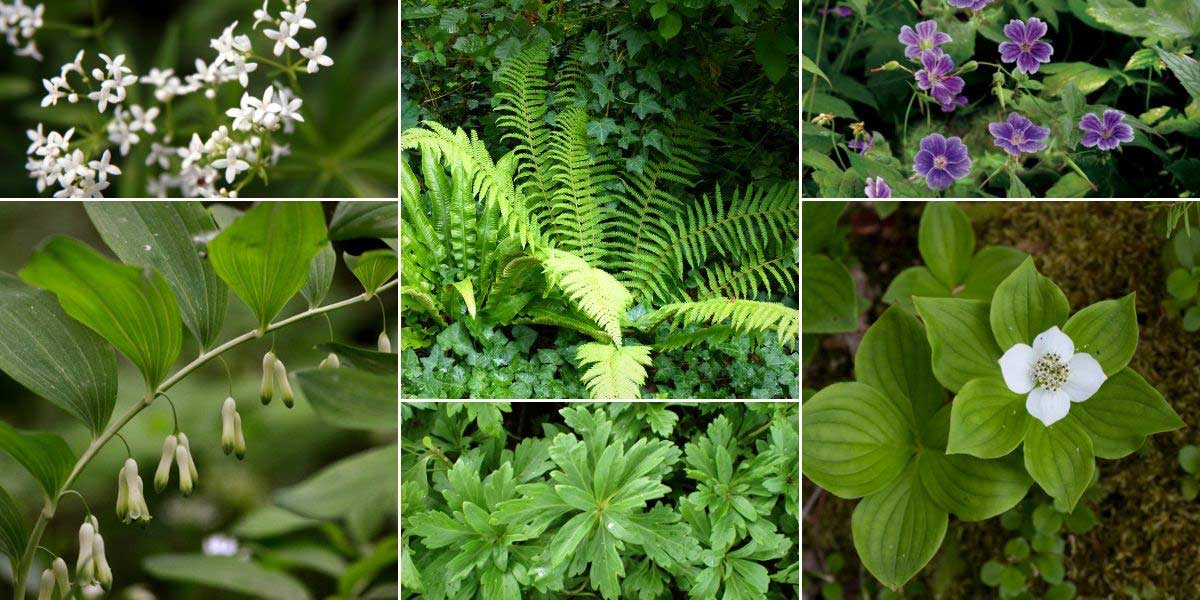
Polystichum is ideal in a woodland garden, with other plants that enjoy cool, shady situations! Here, Galium odoratum (photo David J. Stang), Polygonatum multiflorum (photo Radio Tonreg), Polystichum braunii, Pachysandra terminalis ‘Cutleaf’ (photo Krzysztof Ziarnek), Geranium nodosum ‘Le Clos du Coudray’, and Cornus canadensis (photo Brian Gratwicke)
Don’t hesitate to pair Polystichum with other ferns! We particularly recommend Dryopteris erythrosora, which bears superb coppery fronds in spring. Also discover Athyrium niponicum ‘Pictum’, with silvery–purple fronds. As well as Onoclea sensibilis, which forms true carpets of fronds in bright hues, generally green–yellow, sometimes reddish. All these ferns have fairly similar growing conditions: they will thrive in shade, on fresh, light, humus-bearing soil.
Polystichum will also find a place in a modern, graphic garden. For example, plant it in a pot and place it in a patio or city garden. You can then pair it with horsetails, bamboos, Ophiopogon, Hakonechloa macra, Stipa pennata… For flowering, choose, for example, white-flowered agapanthus, Alliums, or Gaura lindheimeri. We recommend favouring rather sober tones: white, black, purple, chocolate… to achieve a chic, pared-back garden!
Useful resources
- Discover our wide range of ferns!
- Fernatic, site for fern enthusiasts offering extensive information and growing tips
Frequently asked questions
-
Can Polystichum become invasive in my garden?
No, Polystichum has no chance of becoming invasive and colonising your garden. An issue could arise with bracken (Pteridium aquilinum), but it is not used as an ornamental plant in gardens!
-
Should I add fertiliser?
In open ground, there's no need, but we recommend making annual additions of well-rotted compost or leaf mould, placing it around clumps and incorporating it lightly into soil by single raking. If you grow Polystichum in a pot, you can optionally add a little slow-release fertiliser.
- Subscribe!
- Contents
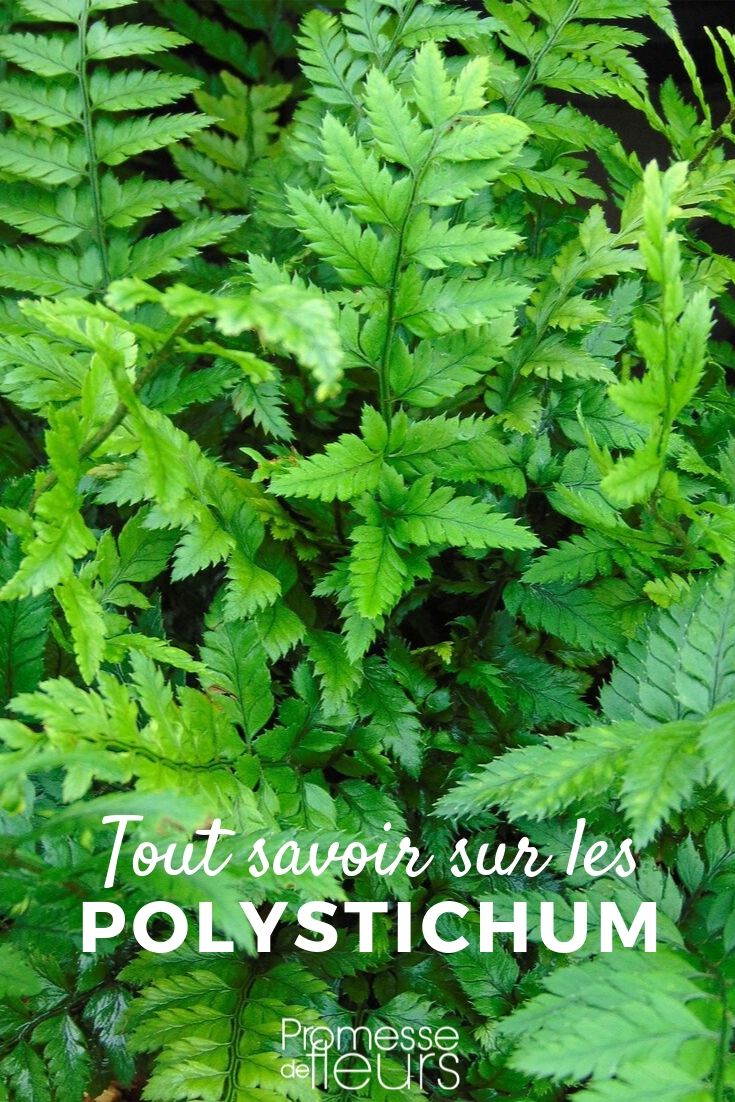
































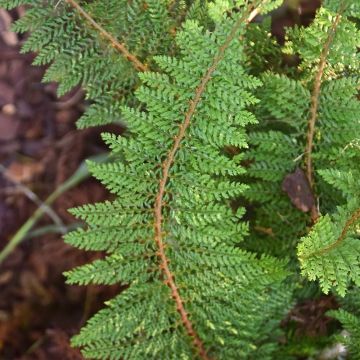

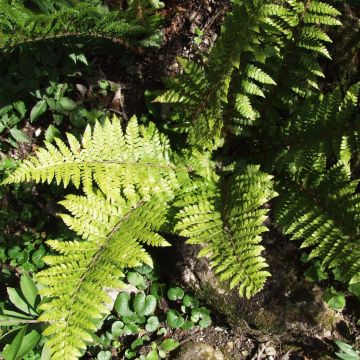

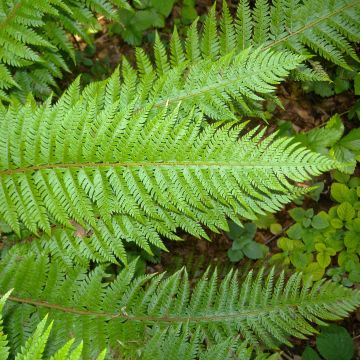

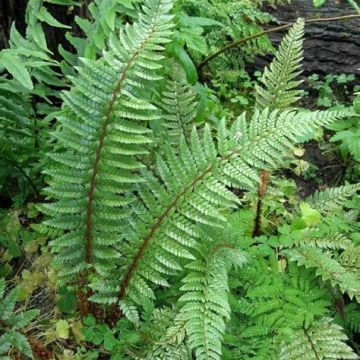
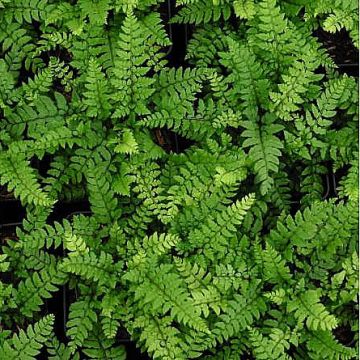
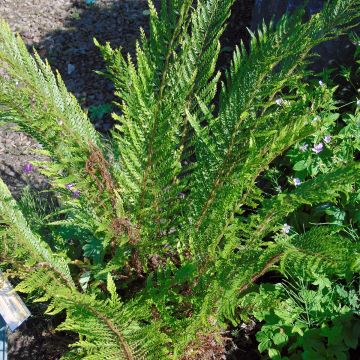
Comments